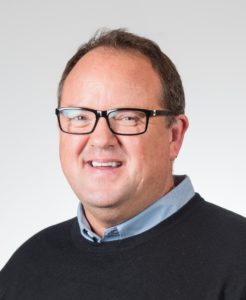
Since COVID hit, almost every nursing home in the country has asked in-house staff to work overtime and extra shifts, leading to increased burnout and churn. More than 70% of nursing homes have relied on agency staff, according to a survey this summer by the American Health Care Association. More than 60% of nursing homes are limiting new admissions because of staffing shortages.
But healthcare providers see agency staff as more expensive. They want to cut costs and control their own hiring pipelines and workforce management. Some are trying to eliminate agency and build out their in-house workforce, while seeking ways to give their employees more flexibility.
How can long-term care facilities move more personnel in-house while still adjusting their approach to reduce employee churn? One answer is a PRN float pool.
Eliminate agency with PRN
PRN staff are a float pool of employees who work on an as-needed basis. This PRN workforce fills shifts without a fixed schedule at the facility, responding on-demand as needs arise. This gives both caregivers and facilities more flexibility.
Flexible shifts contrast with the rigid schedules of most full-time healthcare workers, many of whom are assigned a set number of shifts per week — e.g. five 8-hour AM shifts — and given limited choice.
By introducing flexibility into scheduling to meet the needs of their staff, facilities can recruit and retain them more successfully. But flexibility means more than just moving to six-hour shifts from 12 hours, or allowing a nurse to pick up her child from school. It’s about giving a larger pool of talent a wider array of choice. PRN float pools are a more systemic approach to flexibility.
I believe that PRN is the third way between full-time staff and agency, and that it will give nursing homes the staff they need at a price they can afford, while offering the flexibility that caregivers require.
Three reasons to ramp up a PRN workforce
Save money
The stakes are high for long-term care centers. Almost six in ten nursing homes are operating at a loss, according to a recent survey by LeadingAge, and more than half of them said they could not sustain the same operating pace for another year. Since 2015, about 1,000 nursing homes have closed, forcing their 45,000 residents to move. The need to save money is real.
Increase revenue
Limits on staffing also limit the business that nursing homes can do. The nearly two-thirds of facilities that are constraining admissions due to lack of personnel are also leaving money on the table. By staffing up to operate at full capacity, more nursing homes have a chance of breaking even, so that they can provide continued access to care.
Recruit & retain employees
The main difference between PRN personnel and full-time employees is how they get scheduled. Many healthcare workers want more flexibility than a rigid, full-time schedule will permit. They want to pick their shifts, and sometimes they need to change them. By giving more healthcare workers scheduling flexibility, healthcare facilities struggling to find staff can keep employees longer. The workforce many nursing homes need is actually available, but only on a less rigid schedule.
COVID gave many caregivers their first taste of agency work, with all the flexibility that goes with it. Pre-pandemic, about 15% of healthcare workers opted for flexibility. Now the number is more like 40%, and the facilities that don’t offer flexibility cannot recruit those workers.
Nursing homes that work with a float pool are able to recruit from a larger array of available caregivers. To widen their recruiting pool, nursing homes need new thinking and a new approach, and to manage PRN pools, they require new tools.
Conclusion
PRN is not just an approach to workforce management. It’s a benefit that nursing homes can offer in order to attract and retain talent. I believe many facilities can reduce their reliance on agency staff by 70% with the right PRN management tools. With many facilities acutely short-staffed and facing budget shortfalls, the time has come to rethink in-house scheduling so that they can keep many of their best workers, and provide the care and access that America needs.
David Coppins is the Co-Founder & Chief Executive Officer of IntelyCare. As IntelyCare’s CEO, David is dedicated to empowering nurses to redefine how they work through access to the right technologies. Under his leadership, IntelyCare has filled over 10,000,000 nursing shift hours at healthcare facilities across the country.
The opinions expressed in McKnight’s Long-Term Care News guest submissions are the author’s and are not necessarily those of McKnight’s Long-Term Care News or its editors.




